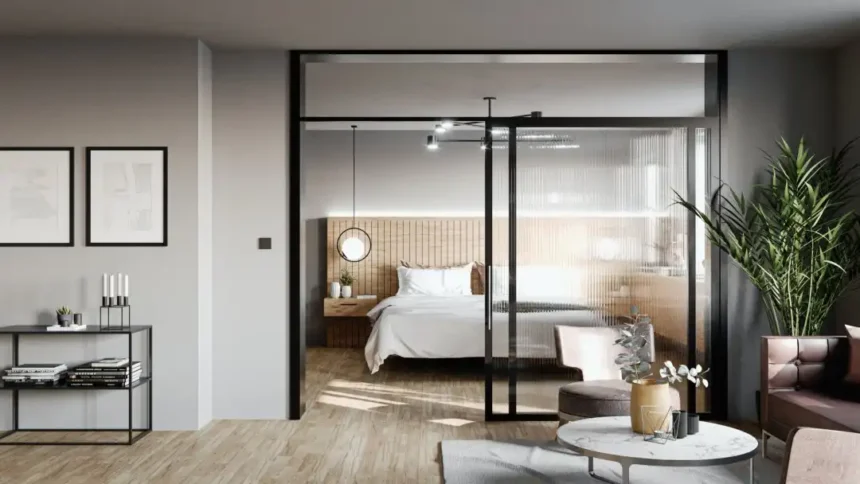Technology has become an indispensable ally in the field of interior design, ushering in revolutionary advancements such as 3D furniture visualization. This tool is fundamentally transforming how designers and homeowners conceive and execute their projects. By harnessing 3D technology, individuals can now preview how furniture pieces will appear in a space before committing to physical changes. This article delves into the intricacies of 3D furniture visualization, outlining its benefits, highlighting top tools available, and providing strategies to maximize its potential.
Understanding 3D Furniture Visualization
3D furniture visualization enables users to generate and observe three-dimensional models of furniture within virtual environments. Unlike traditional methods like 2D floor plans or static images, this technology delivers an immersive and interactive experience. Users can manipulate models to assess how different furniture pieces will fit from various perspectives and under diverse lighting conditions.
The Evolution of Interior Design
In the past, interior design heavily relied on sketches, mood boards, and physical models, which often fell short in conveying a space’s full potential. The advent of computer-aided design (CAD) and subsequently 3D visualization has revolutionized the industry, offering precise, detailed, and highly realistic representations of design concepts.
Benefits of 3D Furniture Visualization
1. Enhanced Accuracy and Detail: 3D visualization excels in providing detailed and accurate depictions of furniture integration and spatial fit. This precision mitigates costly errors and ensures alignment with client expectations.
2. Improved Client Communication: Bridging the gap between designer concepts and client expectations can be challenging. 3D visualization fosters clarity and expedites client approval, reducing the need for revisions.
3. Time and Cost Efficiency: By visualizing furniture in 3D, designers and homeowners can experiment with layouts and styles without physical reconfigurations. This minimizes trial-and-error phases and reduces the risk of investing in unsuitable furniture.
4. Greater Creative Freedom: 3D visualization tools empower designers to explore unconventional designs and layouts, make real-time adjustments, and visualize their impact swiftly.
Top 3D Furniture Visualization Tools
- SketchUp: Known for its user-friendly interface and extensive library of models, suitable for both beginners and professionals.
- Autodesk 3ds Max: Offers advanced rendering capabilities and comprehensive modeling tools, ideal for detailed and high-quality renderings.
- Blender: A versatile open-source tool with a robust set of features and a supportive community, suitable for complex modeling and visualizations.
Maximizing the Potential of 3D Furniture Visualization
- Start with Accurate Measurements: Precise dimensions of spaces and furniture are crucial for realistic modeling.
- Use High-Quality Textures and Materials: Details such as lighting and shadows enhance realism, requiring high-resolution textures.
- Experiment with Lighting: Different lighting scenarios (natural and artificial) affect furniture appearance and overall ambiance.
- Incorporate Real-World Physics: Simulate how light interacts with materials, casting shadows and reflections for added realism.
- Continuous Learning: Stay updated with evolving trends and tools in 3D visualization to refine skills and remain innovative.
Real-World Applications
- Residential Interior Design: Helps homeowners visualize furniture arrangements and make informed decisions.
- Commercial Spaces: Aids in planning efficient layouts for offices, restaurants, and retail stores.
- E-commerce: Enhances customer confidence with virtual try-before-you-buy experiences, reducing return rates.
- Virtual Staging: Supports real estate by showcasing furnished properties to potential buyers, accelerating sales.
Future Trends
- Integration with Augmented Reality (AR): Enhances immersion by placing virtual furniture in real-world environments.
- AI-Driven Design Recommendations: AI algorithms suggest designs based on user preferences and spatial constraints, expediting design processes.
- Accessibility and User-Friendliness: Tools become more accessible, enabling non-designers to create detailed models.
- Enhanced Collaboration: Future tools facilitate teamwork on projects, improving communication and efficiency.
Conclusion
3D furniture visualization stands at the forefront of interior design innovation, offering precise, interactive, and visually compelling solutions. Whether for professionals seeking accuracy and creativity or homeowners aiming to reimagine their spaces, embracing 3D visualization promises to elevate design experiences. As technology evolves, these tools will continue to advance, providing even more accessible and innovative solutions. Embrace 3D furniture visualization to bring creative visions to life with unprecedented precision and ease.




